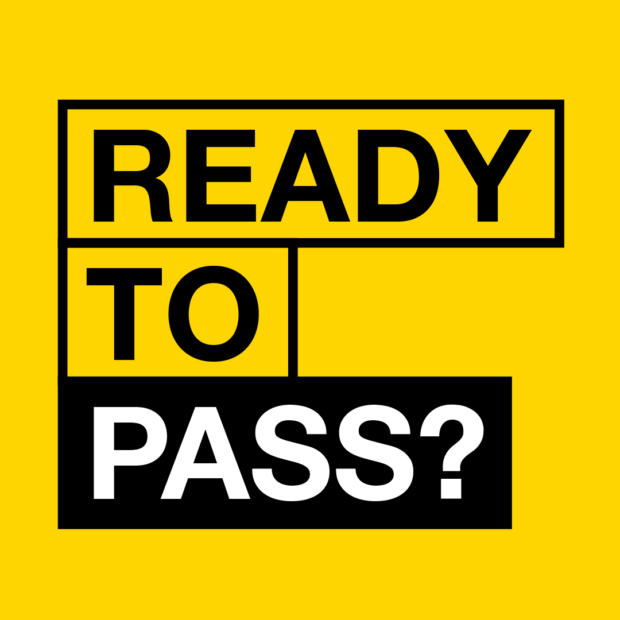
The vast majority of instructors maintain a high professional standard and are a credit to the driver training industry. To make sure this continues, it’s important that DVSA takes appropriate action whenever someone’s conduct falls below what is expected.
As Registrar, it’s my job to make sure that all approved driving instructors are ‘fit and proper’ to be on the Register.
What does ‘fit and proper’ mean?
There isn’t a legal definition of the term ‘fit and proper’ person.
DVSA interprets ‘fit and proper’ as an assessment of the personal and professional standards, conduct or behaviour that the general public and other ADIs might find unacceptable in an ADI.
So when deciding if someone is ‘fit and proper’, I have to make an assessment of the likely risk to the public. I do this on a case by case basis. Whilst I have some discretion and can’t be definitive, there are some situations where an ADI is unlikely to be ‘fit and proper’.
Updated guidance
We’ve recently refreshed the ‘Approved driving instructor (ADI) 'fit and proper' person criteria’ ’telling you how we decide if you meet the minimum criteria to be an Approved Driving Instructor (ADI). We’ve designed it to help you; setting out some situations where it’s likely that you’ll be refused entry to or removed from the register.
It also tells you about the standards DVSA expects you to show, and explains the factors that I have to consider when making my decision about ‘fit and proper’.
Read the guidance to find out more.
Right of appeal to the First-Tier Tribunal (Transport)
There’s always a right to appeal if I refuse or remove you. An independent Tribunal outside of DVSA will consider your appeal.
The Tribunal’s role is to ensure that my decision is fair and reasonable.
The Tribunal publishes its appeal decisions on their website
To stay up to date:
- follow us on Twitter and Facebook
- sign up to get email alerts

8 comments
Comment by malcolm mole posted on
when I was training.... a colleague got into a row with the examiner on his pt2 test (his own driving), over a black and white situation, and hit the examiner in the face.
he never could understand why he was considered unsuitable and not registered
Comment by David Liddell posted on
Given the occasionally quite shocking standard observed of some driving instruction businesses, I was under the impression that there were no longer any controls in place. Such behaviours range from instructor driving whilst using a mobile phone on the motorway to instructing trainees to pull out into the path of oncoming traffic to navigate around parked vehicles.
Whilst an occasional misdemeanour might be excusable, the increasing frequency of incidence is a serious cause for concern.
Comment by Graham cartwright posted on
There seems to be a growing number of instructors also using there mobiles while giving lessons.
Comment by Darren Filby posted on
Totally agree. The popular misconception is that it is mostly independents who are guilty of mobile use during lessons. Not so. I took on a pupil whose previous instructor arranged their mortgage via a mobile during lesson time. That instructor was a franchisee for a household name. As a problem, though, it is definitely on the increase. The public are the ones ultimately paying the price.
Comment by Mark Dawson posted on
Being a relatively new instructor (5yrs) it surprises me how many learners I pick up from what they say are bad instructors.
The things I hear quite often leave me thinking how do they get away with it.
They range from, hitting the learner, shouting at them, banging the dash in the car in frustration, foul language, sexual inuendo, but the most shocking is trying to assist the learners during tests by nudging the seat.
Fortunately I deal with some very good instructors which makes me believe it's still a small minority of bad instructors and hopefully those will get found out.
Comment by Colin Blair posted on
I feel so lucky to have had 2 brilliant female instructors when I was taught to drive. The first unfortunately died after only a few lessons. I did take quite a few lessons as I was no spring chicken and it took a while for everything to sink in. Now, I am in no way complacent but feel like I've been driving for years.
It's sad to hear about some peoples bad experiences of ADI's. And it is no doubt a difficult job, as I can imagine many a teenager think they know best and can be a challenge to teach. Do go to the Purple Driving youtube site. Helen Adams is just so brilliant and refreshing.
Only yesterday I spotted a local instructor parked at the Royal Mail collection office, on double yellows, up on the kerb and displaying hazard lights. Tut Tut.
Lovely to read your posts everyone.
Comment by Mr john deacon posted on
can someone tell me why people are being ripped off when taking their first theory test i went to my first one and i was very unhappy with the hazard perception test the was not real live video's
but cartoon tape i spoke to others and they feel the same way about it we are paying £23 just to look at cartoon driving videos why is this and many ask why do we need a highway code book if we have to take a boring two part test by looking at a screen its not the real thing now is it and its a government making profit ripoff.i do look forward to an answer many thanks
Comment by Helen Luker posted on
We changed the hazard perception from live video to computer generated images (CGI) in 2015. This was because
• our live video was becoming dated
• the capabilities of CGI had improved so that we could create a realistic video
• we could create hazards that were too dangerous to film, especially those involving vulnerable road users such as cyclists
Before we changed the test we trialled the clips to make sure that learners could use them without problems. This was successful and found that the clarity of the new clips is just as good as, if not better than, the old filmed clips.
You ask why you need a Highway Code book. The theory test is made up of two parts; the multiple choice test and the hazard perception test. The multiple choice part of the test contains questions that are based on three publications:
• The Highway Code
• The official DVSA guide to driving; the essential skills
• Know your traffic signs
You don’t need to buy a Highway Code book – it’s available free here: https://www.gov.uk/guidance/the-highway-code